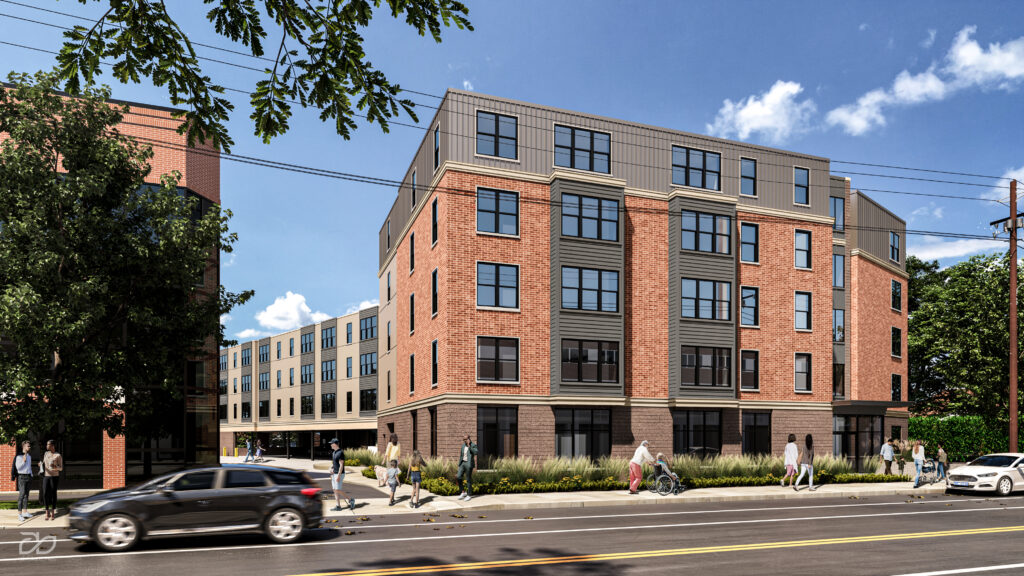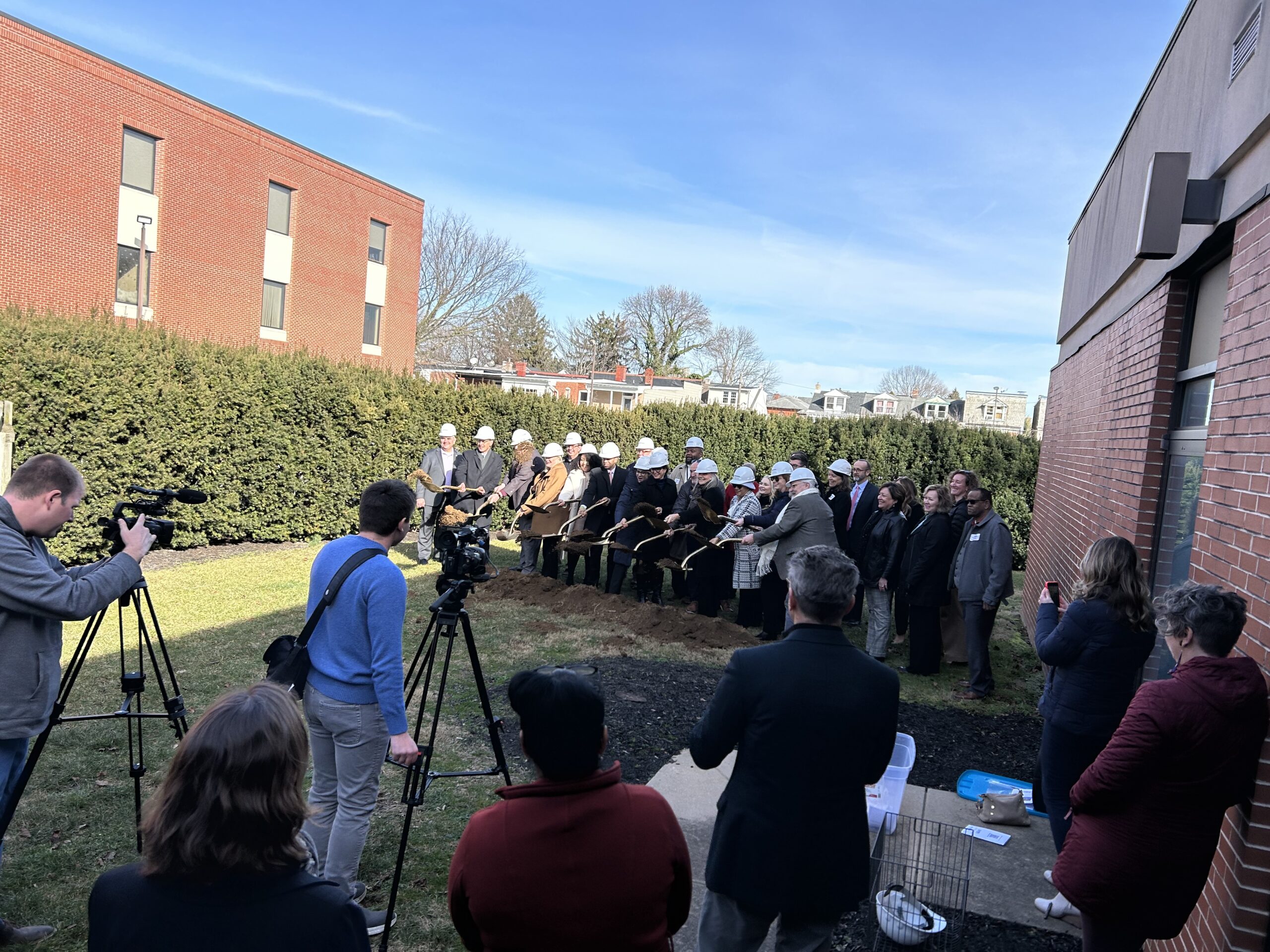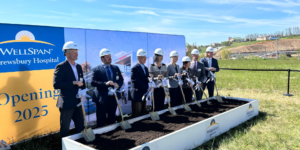Lancaster-area officials, nonprofit executives and business leaders gathered yesterday to mark the next step in a nearly four-year journey to redevelop the former UPMC Lancaster campus along College Avenue.
- Nonprofit developer HDC MidAtlantic broke ground Feb. 7 on the first phase of redevelopment — a $23 million, 64-unit affordable-apartment building at 213 College Ave., the site of a vacant office across the street from the shuttered hospital itself.
- The Lancaster-based HDC spent the last four years cobbling together capital for the project from a range of public and private-sector sources.
- “Today is a day of hope and opportunity for the city of Lancaster,” HDC president and CEO Dana Hanchin said. “After four years of relentless effort, we stand on the precipice of bringing new affordable housing to the West End.”
Why is this happening: Affordable housing is in critically short supply in Lancaster County and other areas of the state, according to Hanchin and others who spoke at yesterday’s groundbreaking for what is being called The Apartments at College Avenue (shown in rendering below).

- Studies estimate Lancaster County is short about 10,000 units, while the state overall could use about 235,000, officials said.
- HDC has a waiting list of about 2,000 households for its communities and has heard from 125 families interested in units at 213 College Ave., said Hanchin.
- She expects to hear from hundreds more by the time the apartments are finished, currently estimated for summer 2025.
- The building is slated to feature 48 one-bedroom apartments and 16 two-bedrooms, with rents ranging from $228 per month to $998 per month.
- The rents are pegged to be within reach of households earning between $10,000 and $45,000 per year.
- “There are a lot of people who throw around the words ‘affordable housing’ and it is truly not affordable. This actually is affordable,” said Lancaster Mayor Danene Sorace, who called HDC’s project the city’s “most significant addition of affordable housing” in decades.
What’s the financing: HDC pulled together a mix of charitable donations, tax credits and low-interest loans, signifying the challenges that face developers of affordable housing.
- One of the biggest chunks, about $12 million, came the federal Low-Income Housing Tax Credit program, Hanchin said.
- The credits were purchased by Lancaster-based Fulton Bank through a syndicator called CREA.
- The Pennsylvania Housing Finance Agency added $4 million in state funding, while county commissioners added another $1.25 million in American Rescue Plan funding.
- The city contributed about $1 million.
- The Steinman Foundation kicked in $1.5 million and United Disabilities Services Foundation contributed $550,000, money that will be used to boost the number of units that are both affordable and accessible.
- The High Foundation gave $250,000, with another $50,000 coming from the Samuel N. Lombardo Foundation.
- HDC raised $600,000 in corporate contributions from sources including Fulton, M&T, First Commonwealth, First Citizens Community, PNC, Santander and Truist banks, as well as PeoplesBank.
- Lancaster-based housing nonprofit Tenfold extended a $1 million low-interest loan for the project.
What’s next: Construction is expected to last about 14 months.
- The project team includes Ephrata-based Benchmark Construction, Lancaster-based Tippetts/Weaver Architects, York-based Site Design Concepts and Lancaster-based law firm Nikolaus & Hohenadel.
- The hospital itself is being redeveloped by a Baltimore-based firm called Washington Place Equities.
- Habitat for Humanity, meanwhile, plans to erect new homes on a nearby parcel at 913 Wheatland Ave.
The background: Pittsburgh-based UPMC announced in 2018 that it was closing the Lancaster city hospital in 2019, spurring debates over what would become of the building.
- HDC and Washington Place unveiled their initial plans in summer 2020.
- “Our journey has certainly been marked by challenges navigating the complexities of a global pandemic, rising construction costs, labor shortages and bureaucratic hurdles, but despite it all, our commitment on delivering on our promise never wavered,” Hanchin said yesterday.








